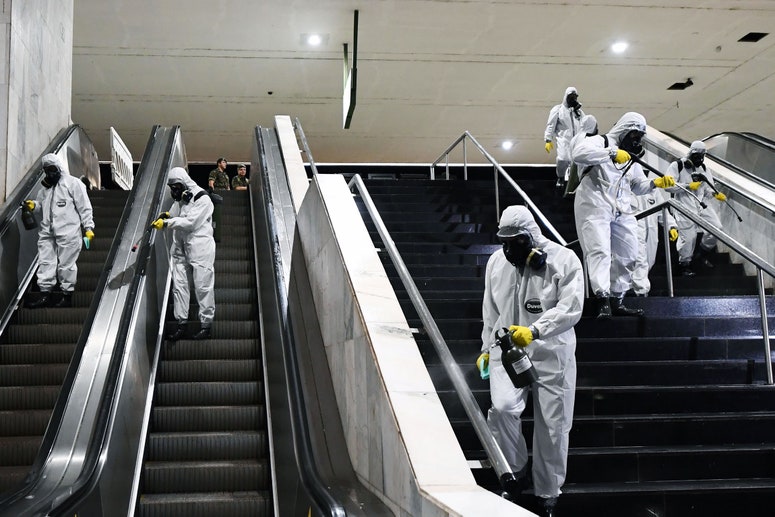Earlier this week, a comment from Maria Van Kerkhove, technical lead of the World Health Organization’s Covid-19 response, offered yet another cautionary tale of what happens when scientific ambiguity meets political certitude. It went like this: At a press conference Monday, Van Kerkhove said that cases in which asymptomatic people spread the virus to others are “very rare.” News outlets, in a way that was etymologically understandable but a bit stenographic, reported that people “without symptoms” are unlikely to spread the virus. And from there, the message metastasized. Pundits and politicians who argue that lockdowns were—and will continue to be—unnecessary pounced. After all, if symptom-free people don’t spread the virus, what’s the point of staying home or wearing a mask at the grocery store? People who feel sick will simply recognize that they’re ill and stay home until they have recovered. Pandemic solved.
Epidemiologists, meanwhile, watched that interpretation spread with horror. “People are out there wondering, ‘If I feel fine, should I be hanging out with my friends, getting on the train, going to protests?’” says Marm Kilpatrick, an epidemiologist at UC Santa Cruz. To him, people should be able to clearly weigh the risks—and this time, the WHO communicated them poorly. “That’s what is driving me and a lot of other people insane. There is extremely abundant evidence that if you have no symptoms you can still spread it.”
The WHO on Tuesday attempted to correct the record—clarifying that the confusion was due to a muddling of scientific lingo. “Asymptomatic” has a general definition, of course: It means “presenting no symptoms of disease.” But scientists like Van Kerkhove also use the term in a narrower sense. She suggested she was referring to cases in which people spend the entire course of their illness symptom-free. That’s different from “presymptomatic” cases, in which people without symptoms test positive but later go on to show signs of illness.
“There’s a lot of jargon out there and it’s even confusing to scientists,” says Ashleigh Tuite, an epidemiologist at the University of Toronto. That gets more confusing when that jargon enters a politicized environment, she notes. Are there better ways to talk about the risks posed by symptom-free spreaders? Probably, she says. It just requires a few more words.
“I think about it as ‘inadvertent transmission from people who don’t know they are infected,’” writes Natalie Dean, an epidemiologist at the University of Florida, in an email. There’s substantial evidence that viral load is high in the days just after a person becomes infected—and before they start showing symptoms. But a high viral load isn’t direct evidence of a high rate of transmission, Dean notes, and there are plenty of complications. Coughing and sneezing—which kick in later among people who develop symptoms—might mean a person could spread more virus, even if their viral load is lower. But on the other hand, those kinds of symptoms are a signal to stay home and keep your germs to yourself. People who don’t have symptoms might be more likely to go out and spread infectious droplets by just speaking or breathing.
Those questions are valid whether or not a person later develops symptoms. “For the average person, I don’t think the distinction matters very much,” writes Tara Smith, an epidemiologist at Kent State University. But within scientific circles, there are important reasons to use the narrower definition of asymptomatic, she adds. Researchers want to answer questions about the immune responses of those people, for example, and whether they might indeed be less infectious than presymptomatic people.
The breakdown also has a bearing on what kinds of public health interventions officials should take. Truly asymptomatic people complicate matters for contact tracers, because they’re less likely to get tested. Instead, they might be identified only when someone they’ve infected gets a positive test and the tracer works their way back to the source. But that takes extra time, and contact tracing is a time-sensitive job, with a limited window to catch people with an active infection. So, potential contacts are lost. If there are lots of people who stay symptom-free, that might mean testing needs to be more ubiquitous to catch people who feel fine and who wouldn’t otherwise volunteer themselves for a test.

